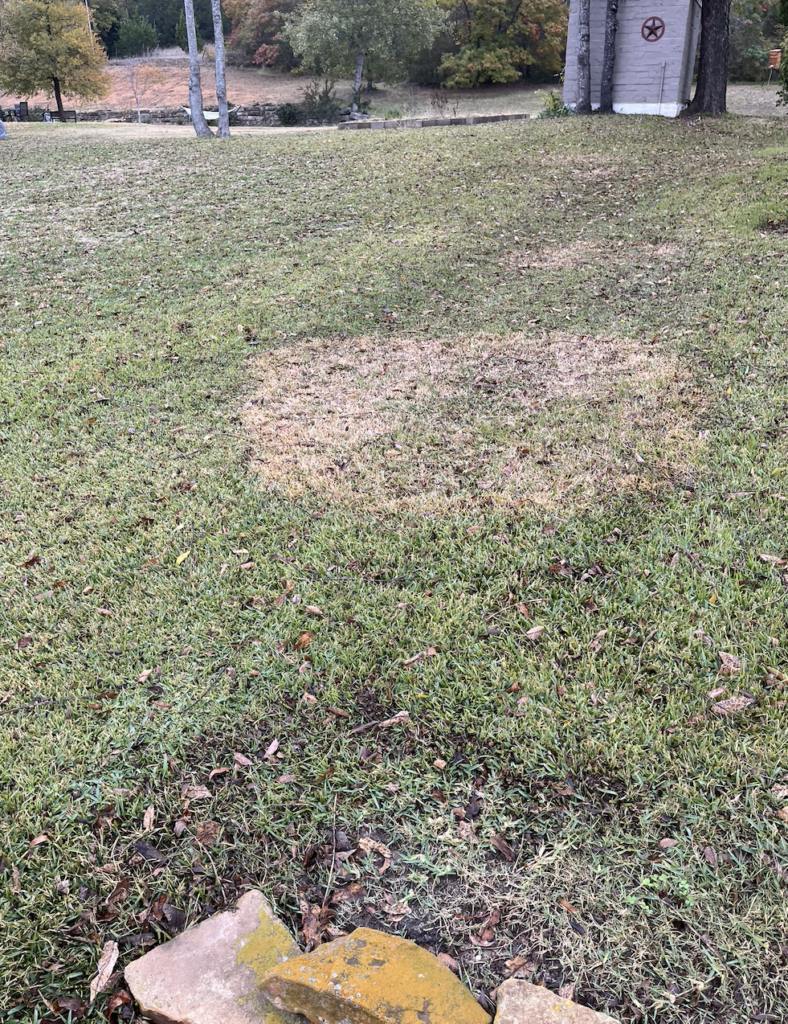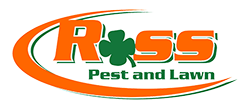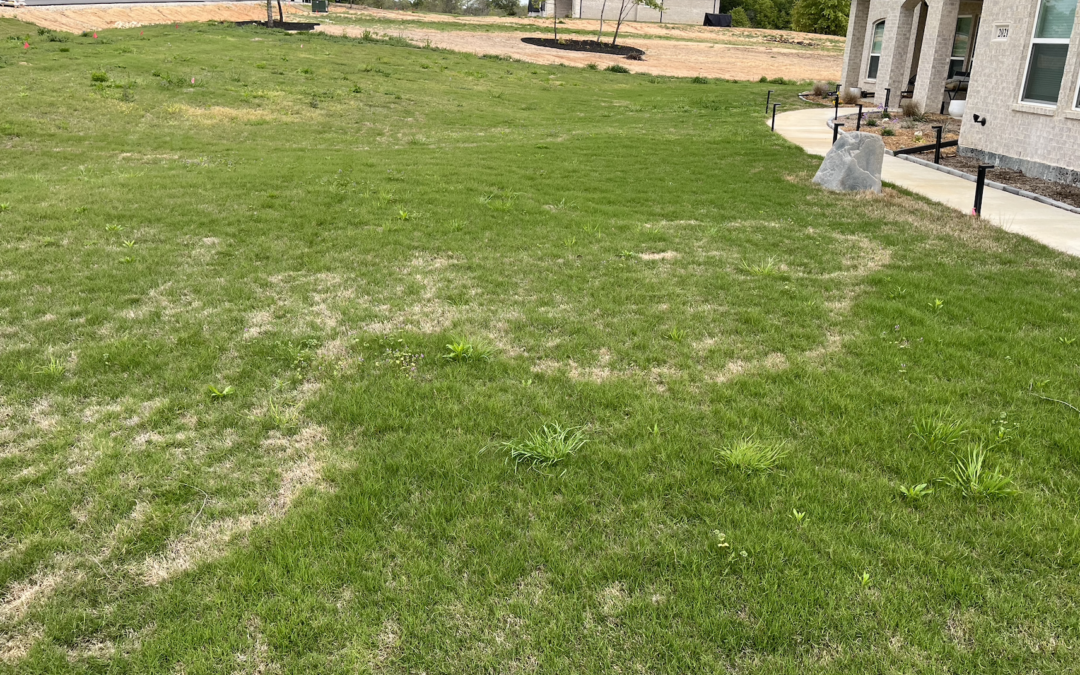Maintaining a lush, green lawn in North Texas is a point of pride for many homeowners. However, a common obstacle to achieving that perfect lawn is the presence of lawn fungi. These unwelcome guests can quickly turn your once-vibrant grass into a patchy, brown mess! In this blog post, we’ll delve into the most common lawn fungi in North Texas, Aledo, and Fort Worth to help you identify them, understand their causes, and, most importantly, provide tips on how to prevent and manage these fungal intruders.
Have you heard of any of these common North Texas lawn fungi?
- Brown Patch or Rhizoctonia Solani: This is one of the most prevalent lawn fungi in North Texas. It typically appears as circular, discolored patches of grass ranging from a few inches to several feet in diameter. The affected grass blades may have a brownish ring around their edges.
- Dollar Spot or Sclerotinia homoeocarpa: “Dollar Spot” gets its name from the small, silver-dollar-sized spots it forms on the grass. These spots can range in size but are typically small, with straw-colored centers and reddish-brown margins.
- Gray Leaf Spot or Pyricularia Grisea: Gray Leaf Spot presents itself as irregularly shaped, dark green or grayish lesions on the grass blades. In severe cases, these lesions can grow, coalesce, and eventually lead to large areas of dead or dying grass.
- Take-All Patch (Gaeumannomyces graminis var. graminis). Take-All Patch often appears as irregularly shaped areas of dead or dying grass. The grass may appear water-soaked initially, but as the disease progresses, it turns brown or tan.
- Rust Fungi There are various species of Rust fungi. This specific fungi can leave your grass with a rust-colored or reddish-brown appearance, as the name suggests. They often appear as a powdery substance on the grass blades.
What environmental factors contribute to fungi growth? There are several environmental factors that contribute to fungi growth. Here are just a few to be aware of in North Texas:
- Humidity and Moisture Levels: Fungi thrive in humid conditions and require moisture to reproduce.
- Soil Conditions: Compacted or poorly-draining soil can create conditions where fungi flourish.
- Temperature: Warm temperatures, especially during the summer, provide an ideal environment for fungal growth.
What are the signs of lawn fungi? Knowing the signs of fungal infections is crucial for early intervention:
- Circular or irregular patches of discolored grass.
- Powdery or mold-like growth on grass blades.
- Water-soaked or brown areas of grass.
- Thin or dying grass in specific areas.
How does this affect my lawn? The presence of these fungi can cause considerable damage to your lawn. They can quickly spread, resulting in large, unsightly patches of dead or dying grass. In severe cases, your lawn may become a breeding ground for pests, leading to further problems.
How can I prevent lawn fungi and disease on my lawn? Preventing lawn fungi is often more manageable than treating an established infection. Here are some strategies to consider:
- Proper Watering Techniques: Be sure to water your lawn in the early morning to allow the grass to dry during the day. This will keep your grass healthy but it will also help with keeping fungi away from too much moisture.
- Lawn Aeration and Dethatching: Regular aeration and dethatching can improve soil drainage and reduce the likelihood of fungal growth.
- Fertilization Practices: Use balanced fertilizers and avoid excessive nitrogen, which can promote fungal development.
- Mowing and Lawn Care Schedule: Maintain the proper mowing height for your grass type and stick to a regular lawn care schedule.
- Overseeding: Overseeding with disease-resistant grass varieties can help prevent fungal infections.
- Fungicides: Consider fungicides as a last resort and always follow the manufacturer’s instructions for proper application. If you need help with this give us a call to set-up an appointment!
Keep your lawn healthy with seasonal maintenance. Different seasons present unique challenges for lawn care in North Texas:
- Spring: Focus on proper watering and fertilization to encourage healthy grass growth.
- Summer: Be vigilant about watering to avoid overwatering during the hot, humid months.
- Fall: Aerate and overseed to prepare your lawn for the cooler months.
- Winter: Reduce watering to prevent fungal growth during the dormant season.
- Get in touch with Ross Pest and Lawn to get on our seasonal maintenance schedule.
Understanding the common lawn fungi in North Texas and how to protect your lawn from them is essential for maintaining a beautiful and healthy outdoor space. By following proper lawn care practices, being vigilant about signs of infection, and taking preventive measures, you can keep these fungal intruders at bay and enjoy a vibrant, green lawn year-round. If you suspect your lawn has a fungal infection or need professional assistance in preventing and managing these issues, don’t hesitate to call Ross Pest & Lawn 817-341-7677!


Recent Comments